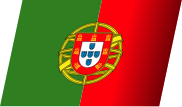Inaugurated on the 18th of June of 1972, it was only after 1982 when the FIA F2 Championship included Estoril on its Calendar that in 1984 the Autódromo do Estoril premiered in the international limelight, hosting the all time pinnacle of motor sports, the Formula One World Championship a position it held up until 1996 (the previous Portuguese Grand Prix being held in Boavista (Porto), ’58 and ’60 and Monsanto (Lisbon) in ’59).
This marked a true golden age for Estoril. Who doesn’t remember Niki Lauda’s runner-up position in 1994, handing him his 3rd and last Championship title? Or Ayrton Senna’s winning debut in 1985 at the wheel of his Lotus JPS under heavy rain. But that’s not all. The Autodromo do Estoril witnessed World Champion, Michael Schumacher’s second F1 win; not forgetting Coulthard’s first win ever in 1995 or Gerhard Berger’s all time first pole and Damon Hill’s second? All theses memories are imbedded deep in Estoril’s history, as well as in the hearts of the many fans that witnessed them.
During a 12-year period, the Autodromo do Estoril has undergone changes in order to keep updated to the latest security and safety standards. Major alterations were made in 1993 – the pit zone was totally renovated, two tunnels were installed to access the paddock as well as a new Control Tower, Hospital Centre and showers. In 1994 the first layout alternation was made and the Variante corner was introduced, substituting the Tanque corner. A modification that considerably reduced to lap speeds for safety reasons.
With all these improvements, in 1995 the Estoril track was booked with new international events, such as the Spanish Supertourism Championship and the European Supertourism, increasing its level of importance throughout the entire region of Cascais and Estoril as a wealth production centre.
A couple of years later, the Autodromo do Estoril administration was forced to undergo further drastic changes in the layout to maximize security levels in order to host major international events. Those changes included a radical alternation of Corner 1, the construction of a new hospital unit and Media Centre.
After two years of heavy building, the Autodromo do Estoril re-opened to the public in 1999 with the International Renault Finals. An event that marked the comeback of the Estoril track to the world stage of motor sports.
With the arrival of the millennium, and after the track passed with flying colours the International Renaults Finals trails, Estoril staged the first of many IRTA tests, enabling the drivers an initial contact before the first edition of the Portuguese Motorcycle Grand Prix in national territory. Altogether, the year 2000 witnessed the strong return of F1 testing and a first for the Estoril Circuit – the FIA GT World Championship.
In 2001, Estoril reaffirmed its international prestige, staging once again the Portuguese Motorcycle Grand Prix, the Eurosport Super Racing Weekend, the International Renault Finals and as first timers: European Le Mans Series, Spanish GT and Formula 3 Championships and the Nissan Open Telefónica.
In the midst of such intense acclaim, innumerable national events have the honor of disputing their titles on the Estoril tarmac, and even the most acknowledged events such as the Rally de Portugal and the Portugal Cycling Tour pay a visit to Estoril. Many car and tyre constructors consider Estoril as an all time favorite to carry out tests.
In 2002, further to the Estoril staged events such as the Spanish GT and Formula 3 Championships, the Estoril Truck Racing and the FIA Sportscar Championship as well as the 3rd edition of the Portuguese Motorcycle Grand Prix, celebrating the 30th anniversary of the Autodromo do Estoril, still come the 3rd edition of the FIA GT, the ETCC and the International Finals of Renault. And for the first time in Portugal the Thoroughbred Grand Prix (Formula 1 Historic cars). Moreover and in this same year the Circuit became entirely under State ownership as it is actually – a State full owned circuit.
In 2003 the Estoril Circuit continued to host the Portuguese Moto GP as well as the FIA Truck Racing Cup, FIA GT, ETCC, European F3000, the Spanish GT and F3 Championships and the FIA Thoroughbred Grand Prix Cars. On the commercial side the year started with a large 3 months world presentation of new heavy vehicles from Daimler Chrysler Group. A total of 251 days of full occupation were achieved.
2004 saw again at the Estoril track Valentino Rossi and his pairs filling up totally all the spectator areas on the 5th edition of the Portuguese Moto GP. The Spanish GT and F3 Championships, the FIA Thoroughbred Grand Prix Cars, the DTM and the Nissan World Series as well as several other national events contributed largely for the total of roughly 300 days full occupancy of the Circuit.
2005 proved once again that the Estoril track continues to be one among the favorite for teams and drivers of the motorsport world. A1 Grand Prix, World Series by Renault, FIA Thoroughbred Grand Prix Cars, the Spanish GT and F3 Championships and the Portuguese round of the Moto GP, not to mentioned all the teams and car manufacturers that chose the Estoril Circuit for their tests/presentations.
The following years continue to bring great emotions to the Estoril Circuit, and while MotoGP remained as the top event of the track, with breathtaking races (last event took place in2012), the Estoril Circuit opened its doors to competitions like Superleague Formula, Auto GP, the traditional Spanish GT Championship, International GT Open, and VdeV Championship (French Endurance) and more. Aiming always to take the name of the track and the country further, the Estoril Circuit’s Management brought to the track the Brazilian Porsche GT3 Cup Challenge in 2011, 2012 and 2014, as well as prestigious the European Le Mans Series in 2011, 2014, 2015 and 2016. In 2016 a total of 303 days of full occupation were achieved.



